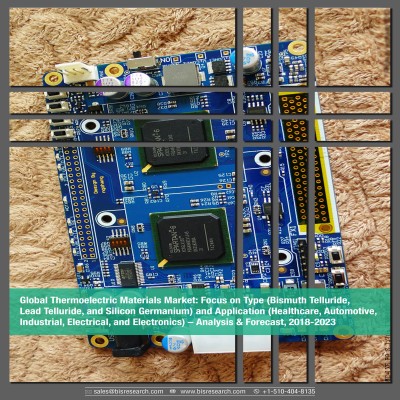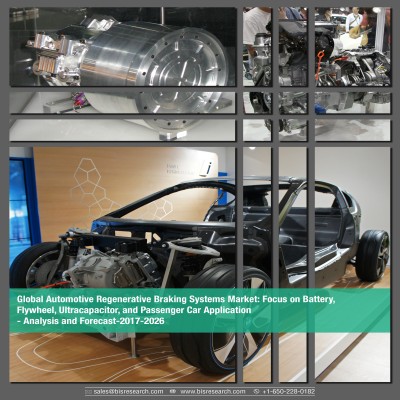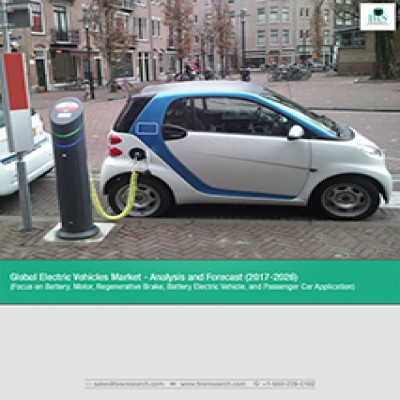A quick peek into the report
Table of Contents
1 Market Overview
1.1 Introduction
1.2 Market Definition
1.2.1 Thermoelectric Energy Harvesting
1.2.2 Automotive Thermoelectric Generator
2 Advancements in Automotive Waste Heat Recovery Technology
2.1 Roadmap of Automotive Waste Heat Recovery System
2.2 Comparative Analysis of different Automotive Waste Heat Recovery System
2.2.1 Regenerative Braking System
2.2.2 Turbo-Compounding
2.2.3 Exhaust Heat Recovery System
2.2.4 Thermoelectric Generator
2.3 Patent Analysis
2.3.1 Patent Analysis: Regenerative Braking System
2.3.2 Patent Analysis: Turbo Compounding
2.3.3 Patent Analysis: Exhaust Gas Recovery System
2.3.4 Patent Analysis: Thermoelectric Generator
3 Market Dynamics
3.1 Drivers
3.1.1 Rising Greenhouse Gas Emission
3.1.2 Increasing Fuel Efficiency Requirements
3.2 Restraints
3.2.1 High Production Cost of Thermoelectric Material
3.2.2 Inability to Produce High Power Electricity Output
3.2.3 Increasing Demand for Electric Vehicles
3.3 Opportunity:
3.3.1 Rapid Commercialization in the Automotive Industry
4 Global Automotive Thermoelectric Generator Market (by Material Type), 2022-2028
4.1 Assumptions
4.2 Limitations
4.3 Market Overview
4.3.1 Bismuth Telluride (Bi2Te3)
4.3.2 Lead Telluride (PbTe)
4.3.3 Skutterudite
4.3.4 Magnesium Silicide
5 Global Automotive Thermoelectric Generator Market (by Components)
5.1 Thermoelectric Module
5.2 Cooling Plates
5.3 Heat Exchangers
5.4 Others
6 Global Automotive Thermoelectric Generator Market (by Vehicle Type), 2022-2028
6.1 Passenger Vehicles
6.2 Commercial Vehicles
7 Automotive Thermoelectric Generator Market (by Region), $Thousand and Units, 2022-2028
7.1 Asia-Pacific
7.1.1 China
7.1.2 Japan
7.1.3 South Korea
7.1.4 Rest-of-Asia-Pacific
7.2 North America
7.2.1 The U.S.
7.2.2 Canada
7.3 Europe
7.3.1 Germany
7.3.2 France
7.3.3 The U.K.
7.3.4 The Netherlands
7.3.5 Finland
7.3.6 Rest-of-Europe
7.4 Rest-of-the-World
8 Company Profiles
8.1 Overview
8.2 II-VI Marlow
8.2.1 Company Overview
8.2.2 Corporate Summary
8.2.3 SWOT Analysis
8.3 Alphabet Energy, Inc.
8.3.1 Company Overview
8.3.2 Corporate Summary
8.3.3 SWOT Analysis
8.4 European Thermodynamics
8.4.1 Company Overview
8.4.2 Corporate Summary
8.4.3 SWOT Analysis
8.5 Faurecia
8.5.1 Company Overview
8.5.2 Financials
8.5.3 Financial Summary
8.5.4 SWOT Analysis
8.6 Gentherm Incorporated
8.6.1 Company Overview
8.6.2 Financials
8.6.3 Financial Summary
8.6.4 SWOT Analysis
8.7 KELK Ltd.
8.7.1 Company Overview
8.7.2 Corporate Summary
8.7.3 SWOT Analysis
8.8 Laird PLC
8.8.1 Company Overview
8.8.2 Financials
8.8.3 Financial Summary
8.8.4 SWOT Analysis
8.9 SANGO Co., Ltd.
8.9.1 Company Overview
8.9.2 Corporate Summary
8.9.3 SWOT Analysis
8.10 Tenneco Inc.
8.10.1 Company Overview
8.10.2 Financials
8.10.3 Financial Summary
8.10.4 SWOT Analysis
8.11 Thermonamic Electronics (Jiangxi) Corp., Ltd.
8.11.1 Company Overview
8.11.2 Corporate Summary
8.11.3 SWOT Analysis
8.12 Valeo
8.12.1 Company Overview
8.12.2 Financials
8.12.3 Financial Summary
8.12.4 SWOT Analysis
8.13 Yamaha Corporation
8.13.1 Company Overview
8.13.2 Financials
8.13.3 Financial Summary
8.13.4 SWOT Analysis
9 Views of Primary Respondents
10 Research Scope & Methodology
10.1 Report Scope
10.2 Global Automotive Thermoelectric Generator Research Methodology
10.2.1 Assumptions
10.2.2 Limitations
10.2.3 Primary Data Sources
10.2.4 Secondary Data Sources
10.2.5 Data Triangulation
10.2.6 Market Estimation and Forecast
List of Tables
Table 1: Global Automotive Thermoelectric Generator Market Snapshot, 2022 and 2028
Table 2.1: Comparison of Energy Harvesting Technologies on the basis of Basic Parameters
Table 3.1: Average Prices of Thermoelectric Materials
Table 4.1: Global Automotive Thermoelectric Generator Market (by Material Type), 2022 and 2028 ($Million)
Table 5.1: Global Automotive Thermoelectric Generator Market (by Components), 2022 and 2028 ($Million)
Table 6.1: Global Automotive Thermoelectric Generator Market (by Vehicle Type), 2022–2028(Units)
Table 6.2: Global Automotive Thermoelectric Generator Market (by Vehicle Type), 2022–2028 ($Million)
Table 6.3: Global Automotive Thermoelectric Generator Market (by Passenger Vehicles), 2022–2028(Units)
Table 6.4: Global Automotive Thermoelectric Generator Market (by Passenger Vehicles), 2022–2028($Million)
Table 6.5: Global Automotive Thermoelectric Generator Market (by Commercial Vehicles), 2025–2028(Units)
Table 6.6: Global Automotive Thermoelectric Generator Market (by Commercial Vehicles), 2025–2028($Million)
Table 7.1: Global Automotive Thermoelectric Generator Market (by Region), 2022–2028(Units)
Table 7.2: Global Automotive Thermoelectric Generator Market (by Region), 2022–2028($Million)
Table 7.3: Asia-Pacific Automotive Thermoelectric Generator Market (by Country), 2022–2028 (Units)
Table 7.4: Asia-Pacific Automotive Thermoelectric Generator Market (by Country), 2022–2028($Million)
Table 7.5: Asia-Pacific Automotive Thermoelectric Generator Market (by Vehicle Type), 2022–2028(Units)
Table 7.6: Asia-Pacific Automotive Thermoelectric Generator Market (by Vehicle Type), 2022–2028($Million)
Table 7.7: China Automotive Thermoelectric Generator Market (by Vehicle Type), 2022–2028(Units)
Table 7.8: China Automotive Thermoelectric Generator Market (by Vehicle Type), 2022–2028($Million)
Table 7.9: Japan Automotive Thermoelectric Generator Market (by Vehicle Type), 2022–2028(Units)
Table 7.10: Japan Automotive Thermoelectric Generator Market (by Vehicle Type), 2022–2028($Million)
Table 7.11: South Korea Automotive Thermoelectric Generator Market (by Vehicle Type), 2022–2028(Units)
Table 7.12: South Korea Automotive Thermoelectric Generator Market (by Vehicle Type), 2022–2028($Million)
Table 7.13: Rest-of-Asia-Pacific Automotive Thermoelectric Generator Market (by Vehicle Type), 2022–2028 (Units)
Table 7.14: Rest-of-Asia-Pacific Automotive Thermoelectric Generator Market (by Vehicle Type), 2022–2028($Million)
Table 7.15: North America Automotive Thermoelectric Generator Market (by Country), 2022–2028(Units)
Table 7.16: North America Automotive Thermoelectric Generator Market (by Country), 2022–2028($Million)
Table 7.17: North America Automotive Thermoelectric Generator Market (by Vehicle Type), 2022–2028(Units)
Table 7.18: North America Automotive Thermoelectric Generator Market (by Vehicle Type), 2022–2028($Million)
Table 7.19: The U.S. Automotive Thermoelectric Generator Market (by Vehicle Type), 2022–2028 (Units)
Table 7.20: The U.S. Automotive Thermoelectric Generator Market (by Vehicle Type), 2022–2028($Million)
Table 7.21: Canada Automotive Thermoelectric Generator Market (by Vehicle Type), 2022–2028 (Units)
Table 7.22: Canada Automotive Thermoelectric Generator Market (by Vehicle Type), 2022–2028($Million)
Table 7.23: Europe Automotive Thermoelectric Generator Market (by Country), 2022–2028(Units)
Table 7.24: Europe Automotive Thermoelectric Generator Market (by Country), 2022–2028($Million)
Table 7.25: Europe Automotive Thermoelectric Generator Market (by Vehicle Type), 2022–2028(Units)
Table 7.26: Europe Automotive Thermoelectric Generator Market (by Vehicle Type), 2022–2028($Million)
Table 7.27: Germany Automotive Thermoelectric Generator Market (by Vehicle Type), 2022–2028 (Units)
Table 7.28: Germany Automotive Thermoelectric Generator Market (by Vehicle Type), 2022–2028($Million)
Table 7.29: France Automotive Thermoelectric Generator Market (by Vehicle Type), 2022–2028 (Units)
Table 7.30: France Automotive Thermoelectric Generator Market (by Vehicle Type), 2022–2028($Million)
Table 7.31: The U.K. Automotive Thermoelectric Generator Market (by Vehicle Type), 2022–2028 (Units)
Table 7.32: The U.K. Automotive Thermoelectric Generator Market (by Vehicle Type), 2022–2028($Million)
Table 7.33: The Netherlands Automotive Thermoelectric Generator Market (by Vehicle Type), 2022–2028 (Units)
Table 7.34: The Netherlands Automotive Thermoelectric Generator Market (by Vehicle Type), 2022–2028($Million)
Table 7.35: Finland Automotive Thermoelectric Generator Market (by Vehicle Type), 2022–2028 (Units)
Table 7.36: Finland Automotive Thermoelectric Generator Market (by Vehicle Type), 2022–2028($Million)
Table 7.37: Rest-of-Europe Automotive Thermoelectric Generator Market (by Vehicle Type), 2022–2028 (Units)
Table 7.38: Rest-of-Europe Automotive Thermoelectric Generator Market (by Vehicle Type), 2022–2028($Million)
Table 7.39: Rest-of-the-World Automotive Thermoelectric Generator Market (by Vehicle Type), 2022–2028(Units)
Table 7.40: Rest-of-the-World Automotive Thermoelectric Generator Market (by Vehicle Type), 2022–2028($Million)
Table 8.1: II-VI Marlow Company Snapshot
Table 8.2: Alphabet Energy, Inc. Company Snapshot
Table 8.3: European Thermodynamics Company Snapshot
Table 8.4: Faurecia Company Snapshot
Table 8.5: Gentherm Incorporated Company Snapshot
Table 8.6: KELK Ltd. Company Snapshot
Table 8.7: Laird PLC Company Snapshot
Table 8.8: SANGO Co., Ltd. Company Snapshot
Table 8.9: Tenneco Inc. Company Snapshot
Table 8.10: Thermonamic Electronics (Jiangxi) Corp., Ltd. Company Snapshot
Table 8.11: Valeo Company Snapshot
Table 8.12: Yamaha Corporation Company Snapshot
List of Figures
Figure 1: Global Automotive Thermoelectric Generator Market Snapshot
Figure 2: Global Automotive Thermoelectric Generator Market (by Material Type), 2022 and 2028
Figure 3: Global Automotive Thermoelectric Generator Market (by Vehicle Type), 2022 and 2028
Figure 4: Global Thermoelectric Generator Market (by Region), 2022
Figure 1.1: Sources for Thermoelectric Energy Harvesting
Figure 1.2: Global Automotive Thermoelectric Generator Market Segmentation
Figure 2.1: Patent Landscape: Regenerative Braking System
Figure 2.2: Patent Landscape: Turbo Compounding
Figure 2.3: Patent Landscape: Exhaust Heat Recovery System
Figure 2.4: Patent Landscape: Thermoelectric Generator
Figure 3.1: Market Dynamics
Figure 7.1: Global Automotive Thermoelectric Generator Market (by Region)
Figure 7.2: Global Automotive Thermoelectric Generator Market Overview (by Region)
Figure 8.1: Company Profiles by Ownership Type, 2018
Figure 8.2: II-VI Marlow: SWOT Analysis
Figure 8.3: Alphabet Energy, Inc.: SWOT Analysis
Figure 8.4: European Thermodynamics: SWOT Analysis
Figure 8.5: Faurecia: Overall Financials, $Billion, 2015-2017
Figure 8.6: Faurecia: Net Revenue (by Business Segment), $Billion, 2015-2017
Figure 8.7: Faurecia: Net Revenue (by Region), $Billion, 2015-2017
Figure 8.8: Faurecia: SWOT Analysis
Figure 8.9: Gentherm Incorporated: Overall Financials, $Million, 2015-2017
Figure 8.10: Gentherm Incorporated: Net Revenue (by Business Segment), $Million, 2015-2017
Figure 8.11: Gentherm Incorporated: Net Revenue (by Country), $Million, 2015-2017
Figure 8.12: Gentherm Incorporated: SWOT Analysis
Figure 8.13: KELK Ltd.: SWOT Analysis
Figure 8.14: Laird PLC: Overall Financials, $Million, 2015-2017
Figure 8.15: Laird PLC: Net Revenue (by Business Segment), $Million, 2015-2017
Figure 8.16: Laird PLC: Net Revenue (by Region), $Million, 2015-2017
Figure 8.17: Laird PLC: SWOT Analysis
Figure 8.18: SANGO Co., Ltd.: SWOT Analysis
Figure 8.19: Tenneco Inc.: Overall Financials, $Million, 2015-2017
Figure 8.20: Tenneco Inc.: Net Revenue (by Business Segment), $Million, 2015-2017
Figure 8.21: Tenneco Inc.: Net Revenue (by Region), $Million, 2015-2017
Figure 8.22: Tenneco Inc.: SWOT Analysis
Figure 8.23: Thermonamic Electronics (Jiangxi) Corp., Ltd.: SWOT Analysis
Figure 8.24: Valeo: Overall Financials, $Billion, 2015-2017
Figure 8.25: Valeo: Net Revenue (by Business Segment), $Billion, 2015-2017
Figure 8.26: Valeo: Net Revenue (by Region), $Billion, 2015-2017
Figure 8.27: Valeo: SWOT Analysis
Figure 8.28: Yamaha Corporation: Overall Financials, $Billion, 2015-2017
Figure 8.29: Yamaha Corporation: Net Revenue (by Business Segment), $Billion, 2015-2017
Figure 8.30: Yamaha Corporation: Net Revenue (by Region), $Billion, 2015-2017
Figure 8.31: Yamaha Corporation: SWOT Analysis
Figure 10.1: Global Automotive Thermoelectric Generator Scope
Figure 10.2: Report Design
Figure 10.3 Primary Interviews Breakdown (by Player, Designation, and Region)
Figure 10.4: Sources of Secondary Research
Figure 10.5: Data Triangulation
Figure 10.6: Top-down and Bottom-up Approach
Key Questions Answered in this Report:
• What is Thermoelectric Energy Harvesting?
• What is Automotive Thermoelectric Generator and why is it needed?
• What are the key technologies used in the automotive industry to recover waste heat?
• What are the trends in the global automotive thermoelectric generator market?
• What are the major forces that are expected to drive the demand for global automotive thermoelectric generator Market?
• What are the major factors inhibiting the growth of the global automotive thermoelectric generator market?
• What are the opportunities for the global automotive thermoelectric generator market?
• What will be the revenue generated by the Automotive Thermoelectric Generator Market in 2022, and what will be the estimates by 2028?
• Which material type (Bismuth Telluride, Lead Telluride, Skutterudite, and Magnesium Silicide) of the global Automotive Thermoelectric Generator will dominate the market between 2022 and 2028?
• What are the key components used for Automotive Thermoelectric Generator and what will be its market size during forecast period 2022-2028?
• What is the revenue generated by each vehicle type (Commercial and Passenger)?
• What is the expected market size for Automotive Thermoelectric Generator in each region i.e. North America, Europe, Asia-Pacific and Rest-of-the -World?
• Who are the key players in the global Automotive Thermoelectric Generator Market?
• What is the future of Thermoelectric Generator in Automotive Industry?
Market Overview
Energy harvesting has, of late, become a major topic of concern, given the issue of sustainability. Original Equipment Manufacturers are trying to minimize the greenhouse gas emission by developing new technologies that involve the use of waste heat emitted from the internal combustion engines. With the increasing fuel efficiency requirement of the engine becoming a major concern, the automotive thermoelectric generator is expected to play an important role in the coming future. As a large amount of heat is wasted in the process of energy conversion in the automotive industry, thermoelectric generator gives a solution to minimize this wastage of heat. Thermoelectric generators have a great potential to reduce fuel consumption by converting waste heat into a usable form, which can be used for running auxiliaries and automotive systems, such as air conditioning system, infotainment system and lightings.
With rapid advancements and innovations in the automotive industry, thermoelectric generator is expected to have an enormous opportunity for its growth, given its advantages and growing need to increase the fuel efficiency of engines. The automotive thermoelectric generator market is still in its nascent stage, however, it has been used in several pilot projects to test their feasibility and efficiency. Major automotive manufacturers, such as GM, BMW AG, Volkswagen Group, and Ford Motor Company, among others, have already carried out research and development in the field of automotive thermoelectric generator to explore its potential.
The global automotive thermoelectric generator market, in terms of value, is expected to be $30.42 million in 2022. It is expected to reach $61.44 million by 2028 with a CAGR of 12.43% during the forecast period 2022-2028. In terms of volume, the global automotive thermoelectric generator market is estimated to be 1,60,100 units in 2022 and 2,93,142 units by 2028 at a growth rate of 10.61% during the forecast period 2022-2028.
One of the major factors driving the demand for automotive thermoelectric generator in the global market is improved vehicle fuel efficiency, further increasing the requirement for fuel efficiency. The automobile industry is amidst a revolution to accelerate its pace toward becoming a sustainable and green industry. Proper utilization of waste heat in the automobile industry is another concern that has been gaining traction since a long time. As per the American Society of Mechanical Engineers (ASME), the heat energy lost due to the internal fuel combustion in the automobiles is almost 65%. Thermoelectric generators, with the help of thermoelectric materials, can convert the waste heat into electricity. Many automobile manufacturers have been actively participating in the development of the technologies that reduce the heat wastage.
On the basis of material, the thermoelectric generator market has been segmented as bismuth telluride, lead telluride, magnesium silicide, skutterudites and others. In terms of value, in 2022, magnesium silicide is anticipated to dominate the market throughout the forecast period. The demand for magnesium silicide is expected to be attributed to its low cost, non-toxic nature, and better properties such as higher electrical conductivity, larger seebeck coef?cients, and lower lattice thermal conductivity as compared to other materials.
On the basis of vehicle type, the automotive thermoelectric generator market includes passenger vehicles and commercial vehicles. The passenger vehicle sector is expected to be the largest market for vehicle type during the forecast period. With the government and OEMs focusing on improving the fuel efficiency of the on-road vehicles, various international efforts have been made to reduce the rate of global warming resulting in a new Standard No 443/2009 by European Union, which prescribed the reduction emission of CO2 up to 130 g/km for new passenger cars till 2015 and up to 95 g/km by the end of 2021. As use of thermoelectric generator in the passenger vehicles is expected to recover and reuse the waste heat to charge the onboard battery which is used to run automotive components, such as infotainment system and air-conditioning system, various car manufacturers, such as Toyota, Honda, Nissan, BMW, Ford, and GM, are now focusing on developing automotive thermoelectric generator (TEG) for passenger vehicles, thus expectedly increasing its demand in the passenger vehicles segment.
This report also covers the global automotive thermoelectric generator market, by geography, and consequently provides the revenue of the key regions which include North America, Europe, Asia-Pacific (APAC), and Rest-of-the-World (Middle East & Africa, and South America).
North America is expected to dominate the market in 2022, with the U.S. as the highest revenue generating country for this market. Presence of OEMs continuously working on developing thermoelectric generator and several ongoing research activities in various institutes in the country are the major factors expected to propel the demand for thermoelectric generator in the country. Europe is estimated to be the fastest growing market. The potential growth is expected to be supported by a large automotive base, increasing government regulations to reduce greenhouse gas emission, and increasing research and development in countries such as France and U.K.
The key market players in the global automotive thermoelectric generator market are Gentherm Incorporated, Tenneco Inc., Faurecia, Valeo, Laird PLC, Yamaha Corporation, Alphabet Energy, Inc., II-VI Marlow, KELK Ltd., SANGO Co., Ltd., European Thermodynamics, and Thermonamic Electronics (Jiangxi) Corp., Ltd.
Report Description
Rapid growth in technological advancements and development of a wide variety of thermoelectric materials which can harness energy from waste heat at higher temperatures are the factors propelling the development of the automotive thermoelectric generator. Various companies across the globe are actively investing in the development of prototypes which are efficient and reliable. The usage of thermoelectric generator in the automotive industry is expected to improve the overall efficiency of the engine, as it helps in utilizing waste heat from the engine to generate energy, which can be utilized for running auxiliaries and systems, such as air conditioning system, infotainment system, and lightings. Furthermore, the use of thermoelectric generator can help in reducing the weight of the alternator and onboard battery, thereby reducing the overall weight of the vehicle and further increasing the efficiency of the vehicle. Although the automotive thermoelectric generator market is in the development stage, it is expected that there will be a gradual increase in the market due to rising regulations on greenhouse gas emission.
The growth in the automotive thermoelectric generator market is expected to vary according to various geographical regions. The automotive thermoelectric generator is expected to hold a prominent share in various countries of North America, Europe, Asia-Pacific (APAC), and Rest-of-the-World (RoW). Geographically, North America is expected to lead the global automotive thermoelectric generator in 2022 both in terms of value and volume. Additionally, Europe is expected to witness the highest growth during the forecast period (2022-2028). Increasing regulations on greenhouse gas emissions and adoption of thermoelectric generator in the commercial vehicles are some of the factors expected to contribute to the market growth in the Europe region.
The key market players in the global automotive thermoelectric generator market are Gentherm Incorporated, Tenneco Inc., Faurecia, Valeo, Laird PLC, Yamaha Corporation, Alphabet Energy, Inc., II-VI Marlow, KELK Ltd., SANGO Co., Ltd., European Thermodynamics, and Thermonamic Electronics (Jiangxi) Corp., Ltd.
The report is a compilation of different segments of the global automotive thermoelectric generator market, including market breakdown by material-type, components, vehicle-type, and region. The report further takes into consideration the market dynamics. The report also discusses in detail about the key participants involved in the industry.
Global Automotive Thermoelectric Generator Market
Focus on Materials, Components, Vehicle Type, and Region - Analysis and Forecast (2022 – 2028)



